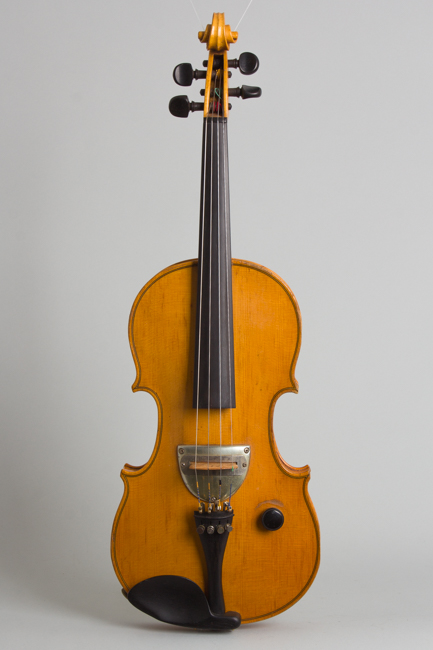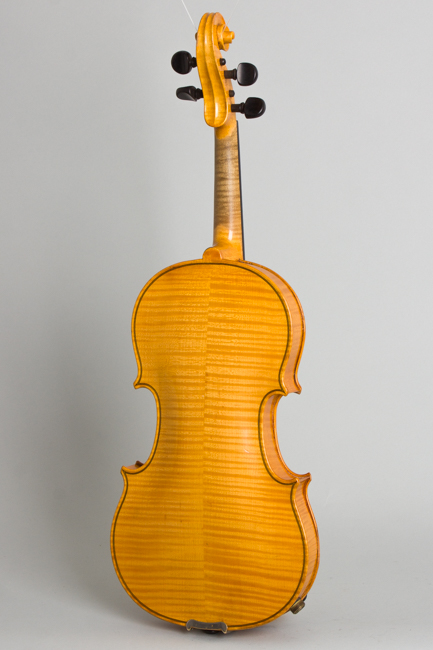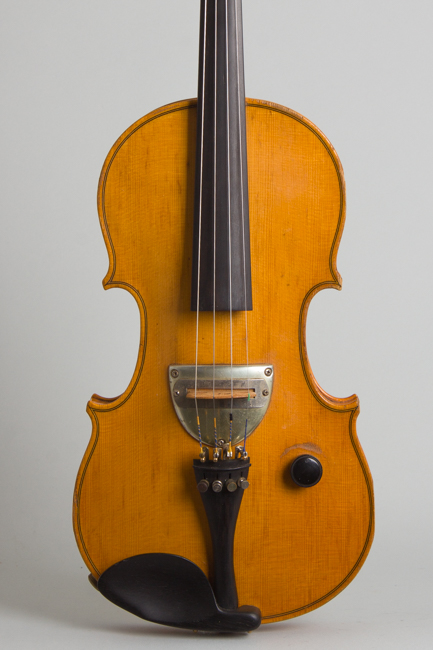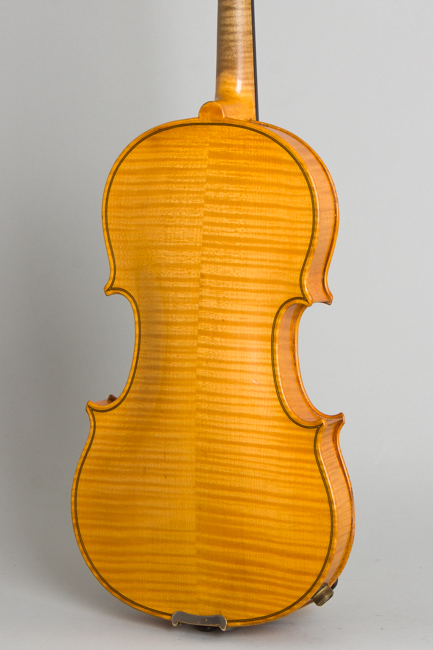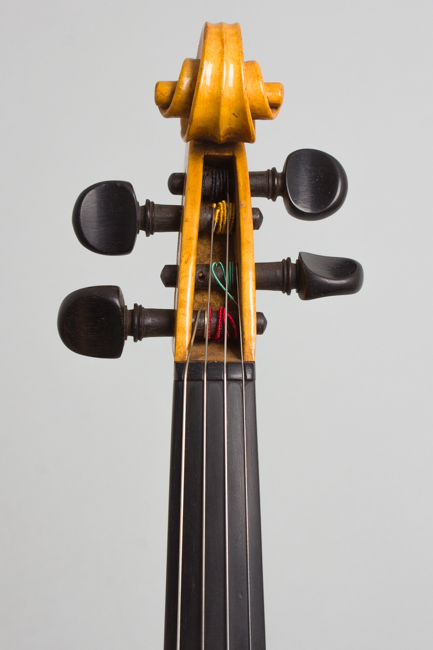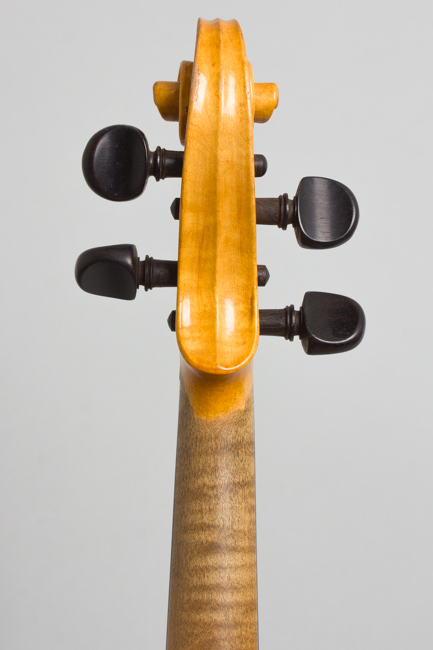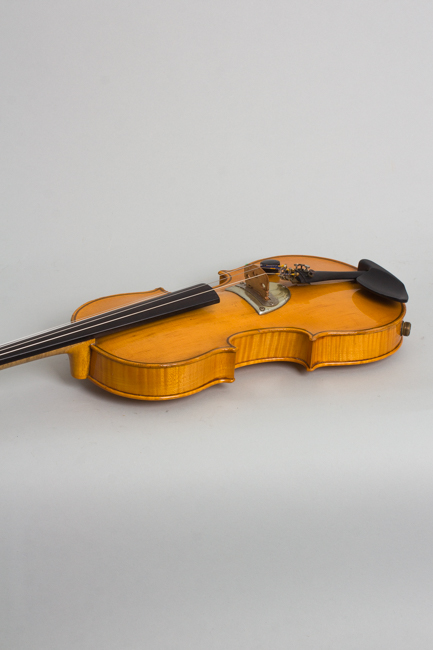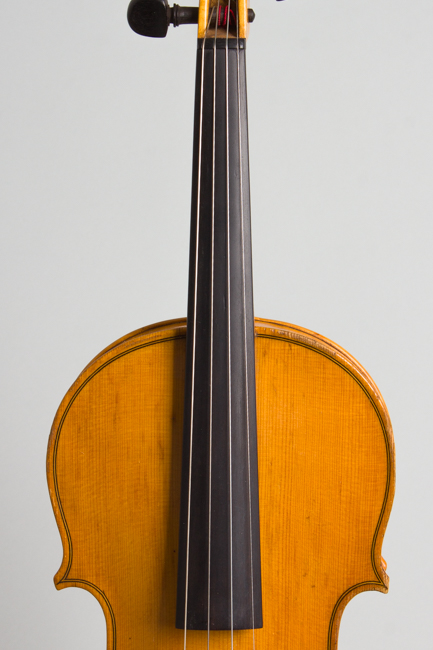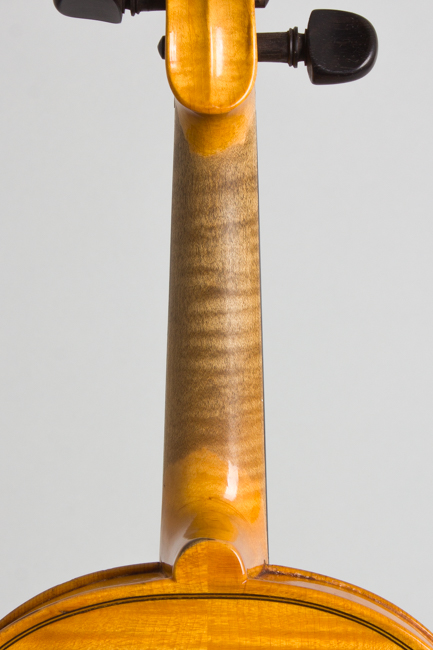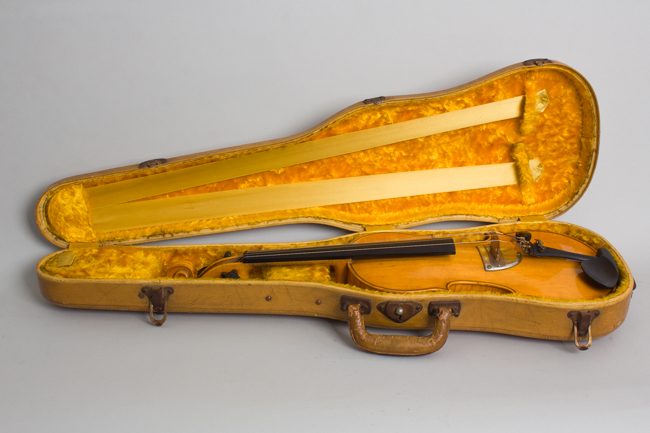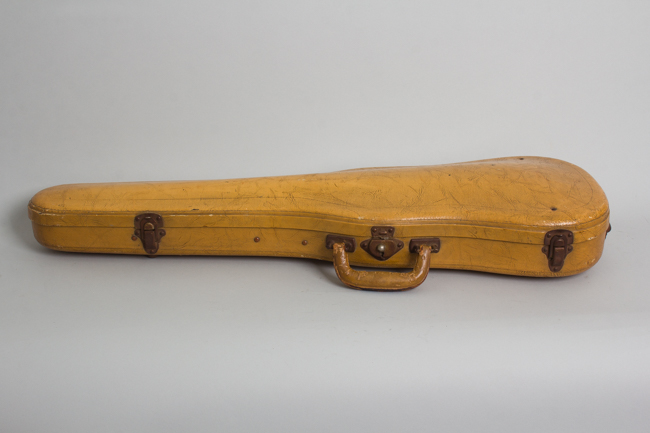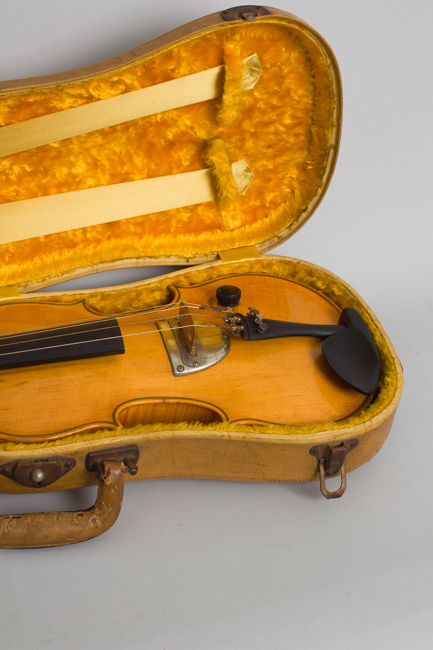National Vio-Lectric Electric Violin (1941)
This item is currently on hold.
Item # 13237
Prices subject to change without notice.
National Vio-Lectric Model Electric Violin (1941), made in Chicago, serial # 1181G, natural lacquer finish, maple back, sides and neck; spruce top, ebony fingerboard, period blonde hard shell case.
This National Vio-Lectric is of the earliest, and to our ears at least still one of the best-sounding electric violins ever produced. In the words of jazz violinist "Stuff" Smith from 1940: "This violin is a KILLER!". The instrument first appeared 1937 and was cataloged up through 1941 until the war put a temporary end to nearly all electric instrument production. This example dates to 1941 and remains in excellent playing condition.
In the mid-1930s all stringed instruments were considered game for amplification; while the Hawaiian and then Spanish guitars were the ones that took off the violin seemed a logical candidate as well. Besides National, Vivi-Tone, Vega and Rickenbacker made interesting and rather futuristic instruments, and in the 1950s Leo Fender tried his hand.
The Vio-Lectric's design is fundamentally unlike most later electric viols, particularly the pickup system which is very different from the piezo contact pickups generally used in modern electric violins. Because the signal is produced by two small magnetic coils it seems sonically more compatible with the typical guitar amplifier than many modern electric violins. The bridge is a traditional wood violin bridge that rests on a metal strip, which in turn is suspended above the coils on rubber shims. The vibrations of the strings are transmitted mechanically to the block and the coils detect the motion of the block. While this may sound a bit Rube Goldberg in use it produces a full, surprisingly natural sound using any type of violin strings, even gut. Leo Fender's 1950s electric violin design had some similarities, but to our ears the National has a warmer, more pleasing tone.
The maple-and-spruce body and neck are purpose-built but conventional in shape and handling unlike some other more abstract 1930s designs. The top on this 1941 example is solid with no F-holes; a few earlier samples did have soundholes but they were quickly deleted from production models. The metal plate surrounding the bridge carries the patent number but there are no other markings on the instrument except a serial number stamped very small on the rim under the tailpiece.
How many of these were made is not known, but surviving examples are extremely rare; this is the latest example we have seen. Hot jazz Stuff Smith was prominently pictured in the National catalog endorsing the instrument, as was "Concert violinist" Loma Cooper. "Vio-Lectric is not as novelty" the company claimed "but a fine violin electrified". Certainly the feel and handling is more familiar to the experienced player than any vintage competitors, while sonically this violin is in its own category.
Length of button stop is 14 1/8 in. (35.9 cm.), 8 3/8 in. (21.3 cm.) wide at lower bout, and 1 7/16 in. (3.6 cm.) in depth, measured at rib. Scale length is 12 7/8 in. (327 mm.). Width of nut is 7/8 in. (22 mm.).
Overall this is a quite attractive example, showing some very light wear. There is minor wear around the volume control knob on top, and light handling wear overall. The only notable repair it to several small cracks in rib at output connector.
While it has a fairly low output compared to most modern electric guitars the amplified tone of this violin is rich and never shrill. It handles and plays excellent and comes with what appears to be the original blonde HSC. Overall Excellent Condition.
This National Vio-Lectric is of the earliest, and to our ears at least still one of the best-sounding electric violins ever produced. In the words of jazz violinist "Stuff" Smith from 1940: "This violin is a KILLER!". The instrument first appeared 1937 and was cataloged up through 1941 until the war put a temporary end to nearly all electric instrument production. This example dates to 1941 and remains in excellent playing condition.
In the mid-1930s all stringed instruments were considered game for amplification; while the Hawaiian and then Spanish guitars were the ones that took off the violin seemed a logical candidate as well. Besides National, Vivi-Tone, Vega and Rickenbacker made interesting and rather futuristic instruments, and in the 1950s Leo Fender tried his hand.
The Vio-Lectric's design is fundamentally unlike most later electric viols, particularly the pickup system which is very different from the piezo contact pickups generally used in modern electric violins. Because the signal is produced by two small magnetic coils it seems sonically more compatible with the typical guitar amplifier than many modern electric violins. The bridge is a traditional wood violin bridge that rests on a metal strip, which in turn is suspended above the coils on rubber shims. The vibrations of the strings are transmitted mechanically to the block and the coils detect the motion of the block. While this may sound a bit Rube Goldberg in use it produces a full, surprisingly natural sound using any type of violin strings, even gut. Leo Fender's 1950s electric violin design had some similarities, but to our ears the National has a warmer, more pleasing tone.
The maple-and-spruce body and neck are purpose-built but conventional in shape and handling unlike some other more abstract 1930s designs. The top on this 1941 example is solid with no F-holes; a few earlier samples did have soundholes but they were quickly deleted from production models. The metal plate surrounding the bridge carries the patent number but there are no other markings on the instrument except a serial number stamped very small on the rim under the tailpiece.
How many of these were made is not known, but surviving examples are extremely rare; this is the latest example we have seen. Hot jazz Stuff Smith was prominently pictured in the National catalog endorsing the instrument, as was "Concert violinist" Loma Cooper. "Vio-Lectric is not as novelty" the company claimed "but a fine violin electrified". Certainly the feel and handling is more familiar to the experienced player than any vintage competitors, while sonically this violin is in its own category.
Length of button stop is 14 1/8 in. (35.9 cm.), 8 3/8 in. (21.3 cm.) wide at lower bout, and 1 7/16 in. (3.6 cm.) in depth, measured at rib. Scale length is 12 7/8 in. (327 mm.). Width of nut is 7/8 in. (22 mm.).
Overall this is a quite attractive example, showing some very light wear. There is minor wear around the volume control knob on top, and light handling wear overall. The only notable repair it to several small cracks in rib at output connector.
While it has a fairly low output compared to most modern electric guitars the amplified tone of this violin is rich and never shrill. It handles and plays excellent and comes with what appears to be the original blonde HSC. Overall Excellent Condition.
